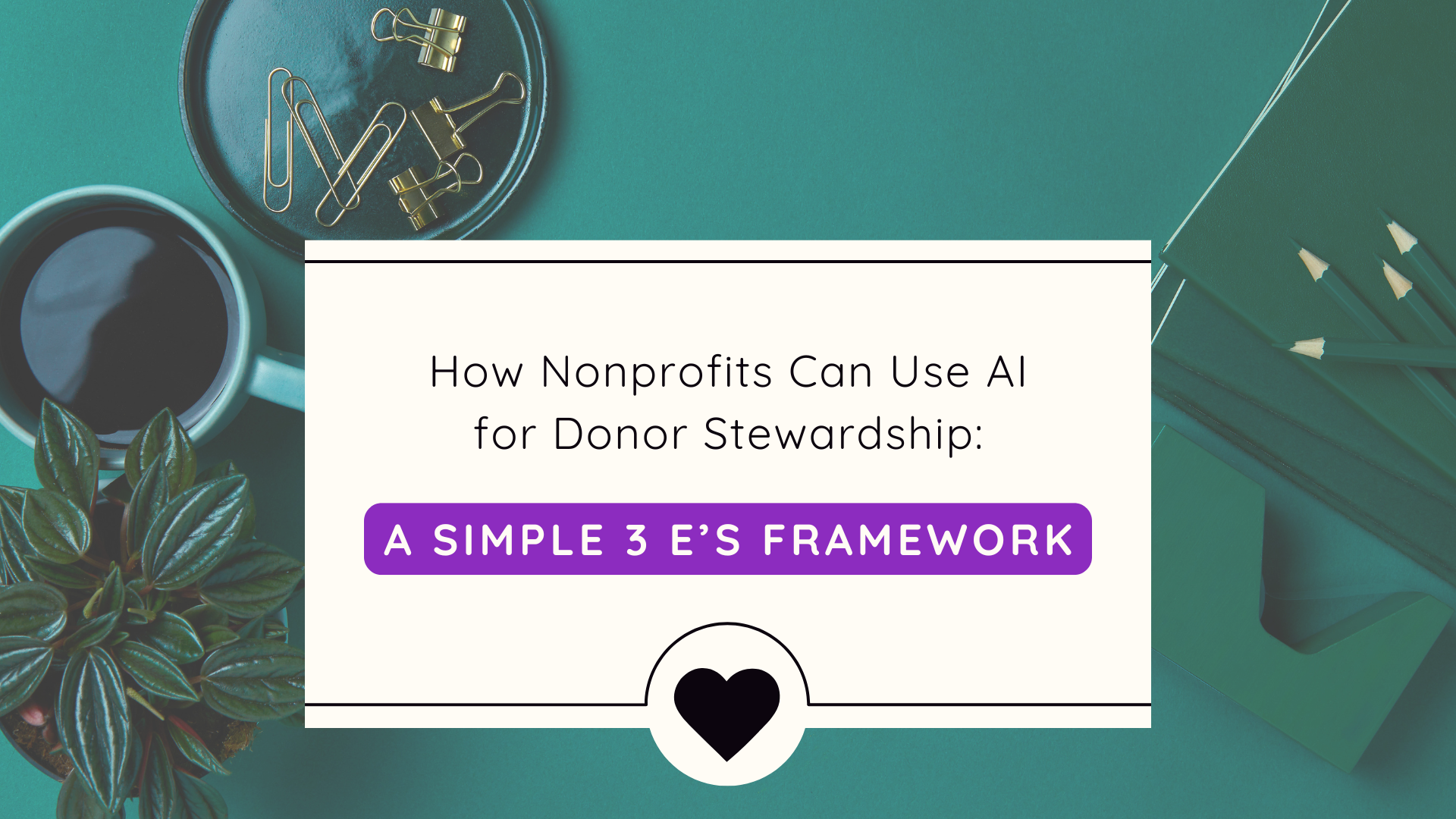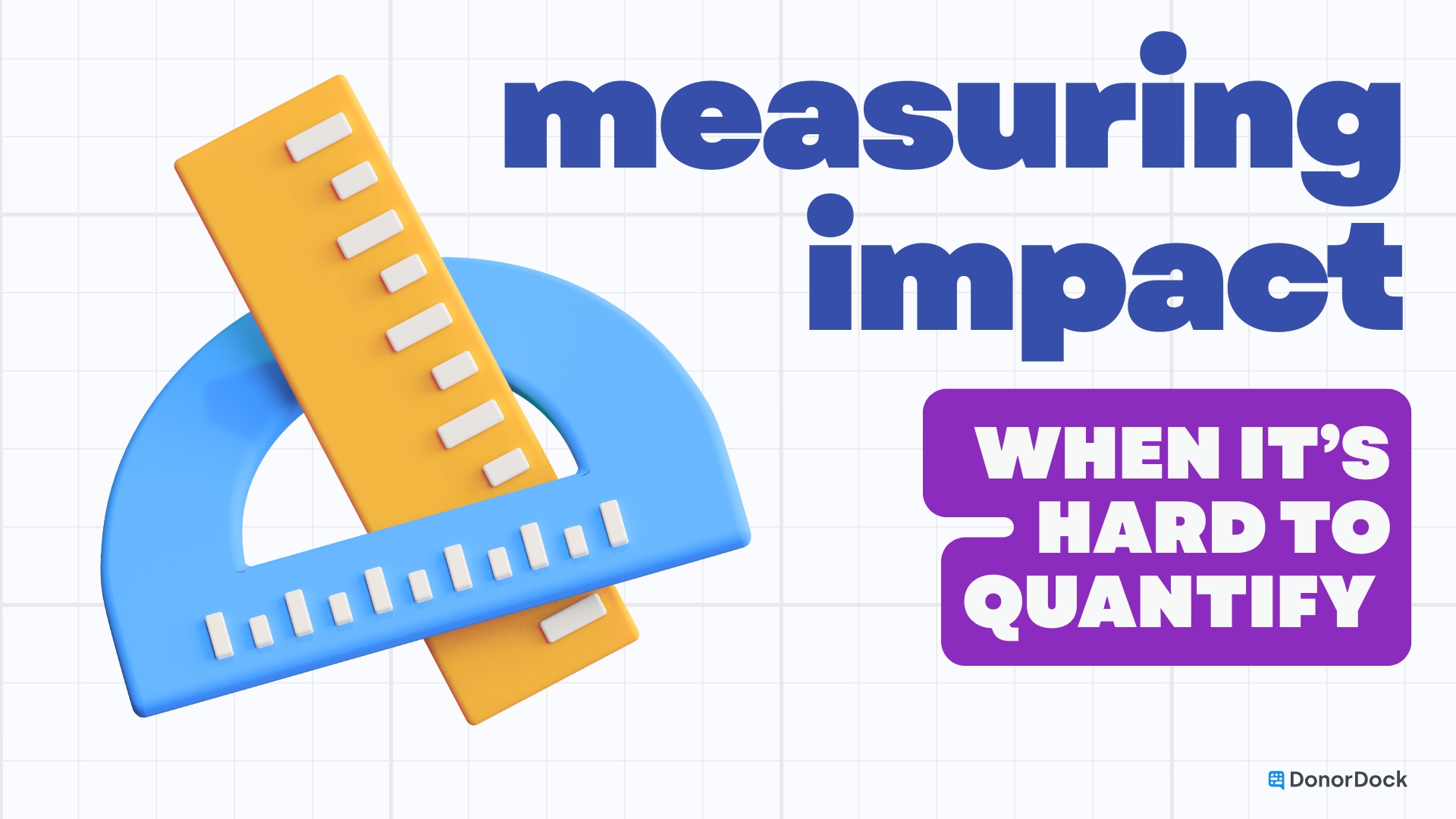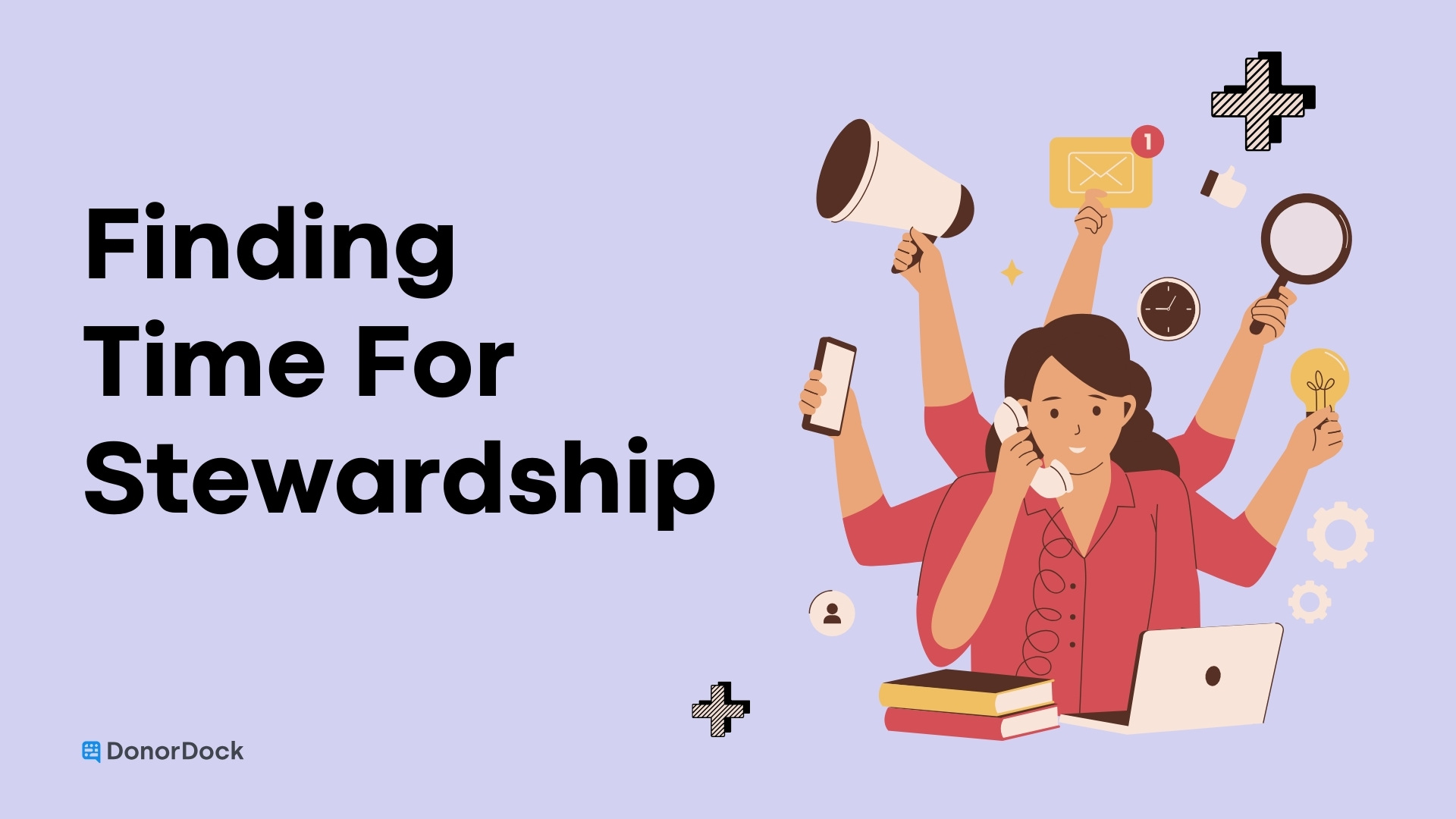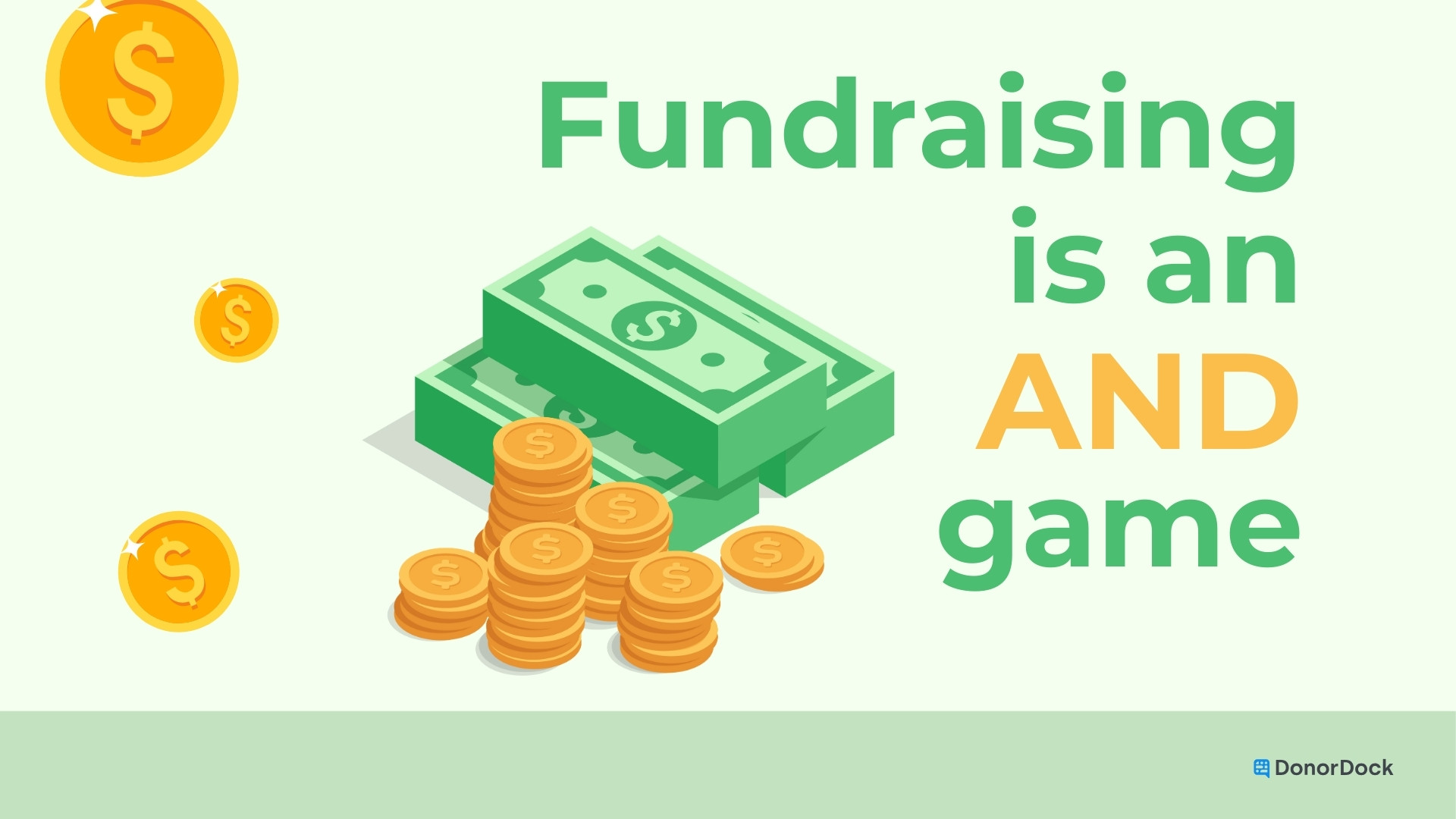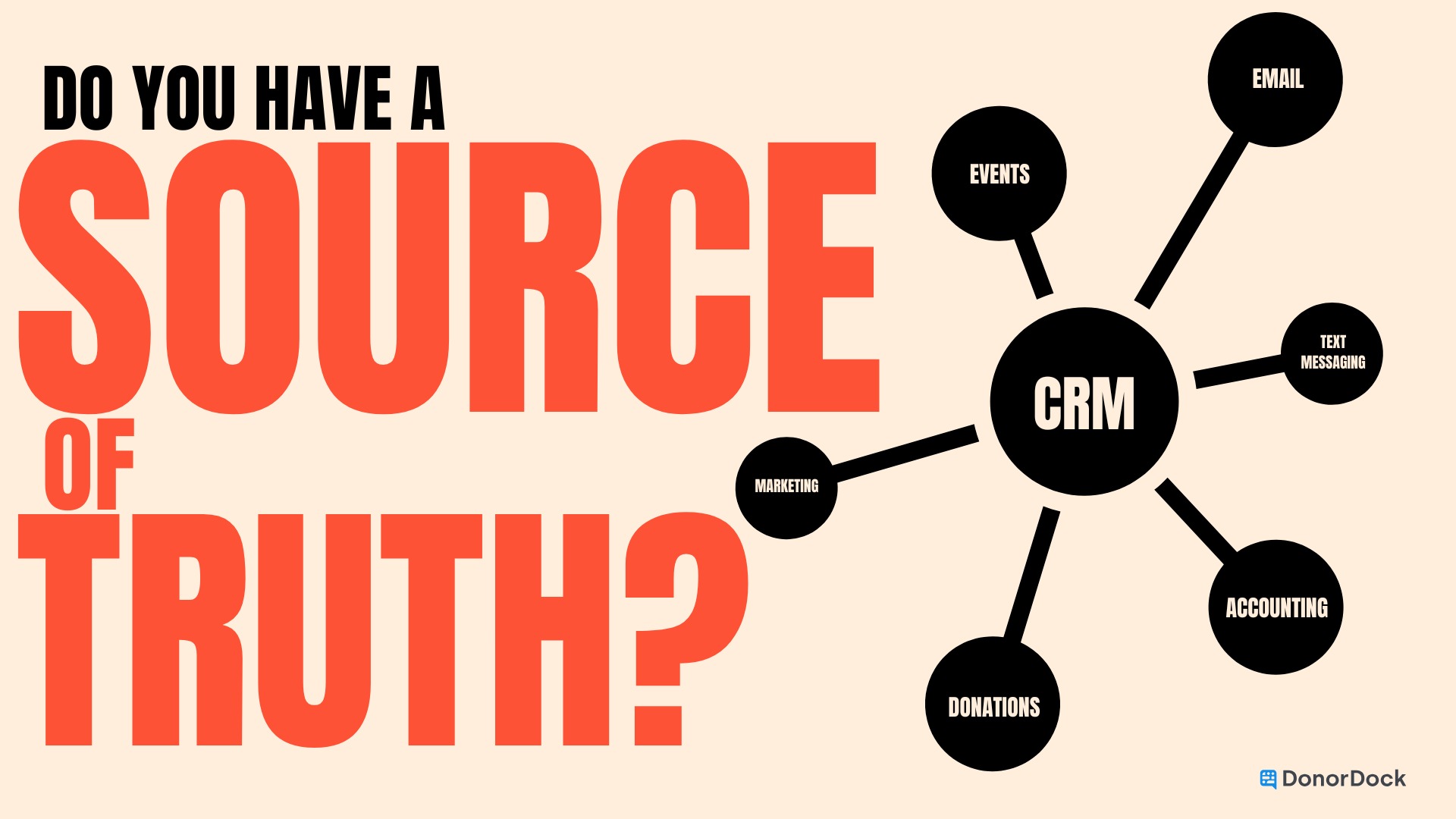Understanding a donor’s journey with your nonprofit is like having a roadmap to success. You see the individual touchpoints and interactions along the way that take someone from first hearing about your nonprofit to being a lifelong supporter. It's all about creating lasting connections and ensuring those who support you today stick around for the long haul. Let’s look at the basics of a donor journey, as well as the benefits of understanding your donors’ experience with your nonprofit.
Table of Contents:
- What is a Donor Journey?
- Stages of a Donor Journey
- Benefits of Understanding a Donor Journey
- Conclusion
What is a Donor Journey?
Think of the donor journey as the path a supporter walks down with your nonprofit, from the moment they first hear about your cause to the point where they become a dedicated advocate.
Each donor's journey is unique, and not all supporters will reach every stage. However, understanding these stages can help you craft tailored communications and engagements that foster deeper relationships with your donors. Every step in a donor's journey is an opportunity. To not just promote your cause, but to have a meaningful dialogue.
So, what are the stages of a donor journey?
Donor Journey Stages

Awareness:
Awareness is the cornerstone of any successful donor journey. This is the initial stage where potential donors first learn about your nonprofit. During this crucial stage, potential donors may stumble upon your organization through various channels: a compelling social media post, a heartfelt testimonial from a friend, or perhaps an engaging community event where your cause is highlighted.
This first encounter sets the stage for the rest of their journey, making it essential to leave a memorable impression. Captivating storytelling, eye-catching visuals, and clear messaging are key elements that can help ensure your nonprofit stands out amidst the noise of countless other causes vying for attention.
Engaging donors in the awareness stage
A whopping 69% of nonprofit donations are made online. This means that a majority of donors are discovering and engaging with nonprofits through some form of digital interaction. Whether they're scrolling through social media, getting inspired by a powerful email campaign, or simply searching the web for a cause that resonates with them, digital platforms are key treasure maps guiding new donors to the X that marks the spot – your nonprofit!
So, how do you increase your digital presence?
- Search Engine Optimization (SEO) - SEO can feel very overwhelming, especially when you’re already wearing a lot of other hats. You don’t necessarily have the time to deep dive into search algorithms. So, let’s look at the basics to improve your nonprofit’s digital presence. Create a list of keywords that you’d like to rank for and that align with your mission and start using those regularly in your content. For smaller nonprofits, these words will be more targeted. For example: You probably wouldn’t rank for “Animal Shelter”, but “Animal Shelter in [your location]” will be much easier to rank for.
- Google Ad Grants - Did you know that Google offers nonprofits $10,000 of free advertising a month for nonprofits? Learn more about taking advantage of these free dollars with this free guide to Google Ad Grants.
- Social Media - Posting on social media can be a powerful way to reach new audiences and stay top of mind with current donors. Post content that is relevant to your audience and uses keywords that you want to rank for. Struggling to come up with post ideas? Check out Steward - an AI assistant designed for nonprofits. A great prompt: Give Steward specifics about your nonprofit and ask for 10 social media post ideas.
Moving from Awareness to Consideration
To usher donors in the Awareness Stage along to the Consideration Stage of their donor journey, you’ll need easy ways for them to further explore your nonprofit. This could include directing individuals to your website for more information, inviting them to sign up for newsletters or updates, or encouraging attendance at upcoming events where they can engage directly with your cause. By fostering curiosity and offering opportunities for deeper engagement, you can lay a strong foundation for cultivating lasting relationships with potential donors as they progress along their journey.
Consideration (or Research):
At this point, potential donors are curious and seeking more information about your nonprofit. They might sign up for your newsletter or follow you on social media. Now, they're seriously contemplating a donation. They're looking at what impact their donation could have and how it aligns with their personal values. They want reassurance that their support will make a tangible difference.
Engaging donors in the consideration stage of their journey
Providing clear and concise communication about your mission, goals, and impact helps potential donors make an informed decision about giving to you. Prevent barriers to entry by making sure this information is easily accessible to potential donors.
- Create a compelling website - Your website is the central hub where potential donors first look to find information about your nonprofit. A website with copy that resonates with potential donors plays a big role in whether you receive a gift or not. Is your nonprofit following website best practices?
- Highlight success stories -Stories of success, testimonials from beneficiaries, and concrete examples of how donations are used help build trust and demonstrate the value of supporting your cause. Share these stories on your website and social media.
- Post regularly on social media - Social media plays a role in both the Awareness and Consideration stages of the donor journey. Sharing regularly about your mission shows donors that you are an active nonprofit working hard to make an impact.
- Engage potential donors - Encourage dialogue through social media, email, or personalized outreach to help nurture relationships and deepen engagement as individuals progress along their donor journey. By actively listening to their questions, concerns, and feedback, you can foster a sense of connection and demonstrate your commitment to transparency and accountability.
Storytelling is an important part of engaging potential donors in this stage. Emotionally resonating stories move hearts and encourage generosity and philanthropy.
Decision:
The pivotal moment in the donor journey is the decision stage. This is the turning point where they choose to make a financial contribution for the first time towards your cause. Properly engaging and motivating them at this stage can ensure not just a one-time donation, but may lay the foundation for a long-term relationship.
Improving a donor’s experience
- Optimize donation pages - Making the donation process easy, quick, and secure is vital at this stage. No one wants to battle a complicated procedure to give their money. Wondering if your donation page is optimized? Check out the Donation Page Playbook to make sure you’re following donation page best practices.
- Highlight Impact - When it comes to making a decision, a donor wants to understand the potential impact of their contribution to your cause. Use images, stories, and statistics on your donation page to vividly illustrate the tangible impact their gift will make. It is also helpful to tie a specific impact to a donation amount, as this can increase how much a donor gives.
- Donor Recognition - Have a plan in place for acknowledging gifts after they’ve been given. Immediately after a donation has been given, redirect your donors to a “thank you” page. With the right nonprofit CRM, you can send automated receipts and thank you emails, so donors know that their gift matters.
“Consider every conversion point that you have in your donor journey, let’s say it’s the donation page. They go to the donation page and it’s a checkout form. What does that experience look like? And what happens after they make the gift? A lot of times nothing happens. It’s just a blank screen after and you don’t get an email. You don’t get anything. There needs to be recognition of the action that was taken by the donor or supporter.
-Julia Devine on Beyond the Donation episode 26
Engagement:
So you've successfully secured your first donation from that new donor. Congratulations! But the work is far from over. This new chapter begins with the Engagement Stage. Your focus now is to cultivate your connection with the supporters and highlight the invaluable effects of their contributions.
Building Positive Experiences
Your donor's first gift is just the starting point. Because donor acquisition can cost up to 5x more than donor retention, it’s important to continue to engage those who’ve already given to your nonprofit. The post-donation journey builds upon that initial connection by fostering positive experiences. How do you give these positive experiences?
- A personalized thank you - Whether through snail mail, email, text, or phone call, it’s important to prioritize showing donors your appreciation for them.
- Nurture communication - Newsletters, emails, and texts that aim at nurturing connection are a valuable part of growing donor engagement. Monthly or quarterly nurture emails allow you to update donors on the work being done. Donors value transparency and communications are a great avenue to be open and honest about what is happening at your nonprofit.
- Illustrative impact reports - Crafting an impact report is a vital practice for any nonprofit intending to magnify its influence and leave a lasting impact. With an impact report, you can track the performance of specific initiatives, programs, or events. A nonprofit impact report shows the successes — or possibly failures — of such efforts. This essential document links the work of the organization and the financial support they have received to tangible outcomes.
The decision stage is not just about landing a donation; it's about creating a meaningful connection between the donor and your cause. Implement these steps and watch as your prospective donors transition into actual supporters, creating enduring relationships with your organization. Foster a wonderful experience and your supporters are more likely to contribute again in the future.
Loyal Supporter, Advocate, and Major Donor:
These three stages of the Donor Journey are reserved for donors who offer ongoing support. These donors consistently support your cause and have a deep connection to your mission.
- A Loyal Supporter gives regular recurring gifts, whether monthly or annually.
- At the Advocate stage, they're not just giving; they're actively promoting your cause to others. Someone in the Advocate stage might share your content regularly, bring friends to events, or volunteer their time.
- A Major Donor is someone who gives significantly of their time or resources. These are individuals who make significant, often larger, contributions. Additionally, they might be involved in strategic discussions or sit on the board.
Identifying these stages in a donor's relationship with your organization increases the effectiveness of your outreach attempts. It allows you to provide a personalized experience, thus making their journey with your nonprofit truly meaningful.
Benefits of understanding a donor journey
When you understand how potential donors interact with your nonprofit, you’re better able to
- Segment your donors: Categorize your donors based on their engagement level, past contributions, and interest areas. Donor segmentation allows you to craft more targeted, relevant communication.
- Personalize your communication: Understanding the 'Where,' 'Why,' and 'How' of your donors' engagement contributes to sending customized messages that resonate better and ensure higher response rates.
- Boost donor loyalty: By providing value, nurturing trust, and refining experiences continually, you can increase donor satisfaction, encourage repeat donations, and foster lasting relationships.
- Enhance donor value over time: By fine-tuning your interactions based on your understanding of your donor's motivation and communication preferences, you can gradually move them towards higher contribution levels
To sum it up, embracing your donor's journey is as good as embracing your donors. It displays that your organization values its supporters not just for their dollars but as partners in your mission. Remember, a robust donor relationship requires continuous effort, and each interaction along the journey can strengthen that bond.
Incorporate this strategy, understand their journey, engage them better, and witness how a better understanding of your supporters' roadmap contributes to the sustainable growth of your nonprofit.
To streamline this process, a tool like DonorDock can automate many aspects of donor engagement, ensuring no opportunity for advancement along the journey is missed. If you'd like to map out these stages for your organization, check out this free donor journey map template for a great starting point.
Conclusion
Understanding your nonprofit’s donor journey is like holding a roadmap to success. It illuminates the vital touchpoints that guide a curious onlooker to become a lifelong supporter of your cause. These interactions are about cultivating enduring relationships and ensuring today's supporters remain committed in the long run.
By understanding your donor's journey — from initial awareness, through consideration and decision, to engagement and eventual loyalty — your nonprofit is equipped to communicate effectively, engage sincerely and inspire generously. This knowledge helps to craft rich, personalized experiences that deepen relationships and entrench support for your mission.
Remember, a prosperous donor relationship isn't a one-time transaction; it requires continuous effort and interaction. Each junction along the journey strengthens this bond, transforming individual contributions into a sustainable foundation of support for your nonprofit.
So, take time to understand your donor journey framework, and see how fostering this roadmap boosts your organization's sustainable growth.
Are you using a donor development platform that serves up actionable tasks to help you cultivate donor relationships along each stage of their journey?
Nurture your donor relationships with DonorDock. Try it for free today at www.donordock.com/signup



